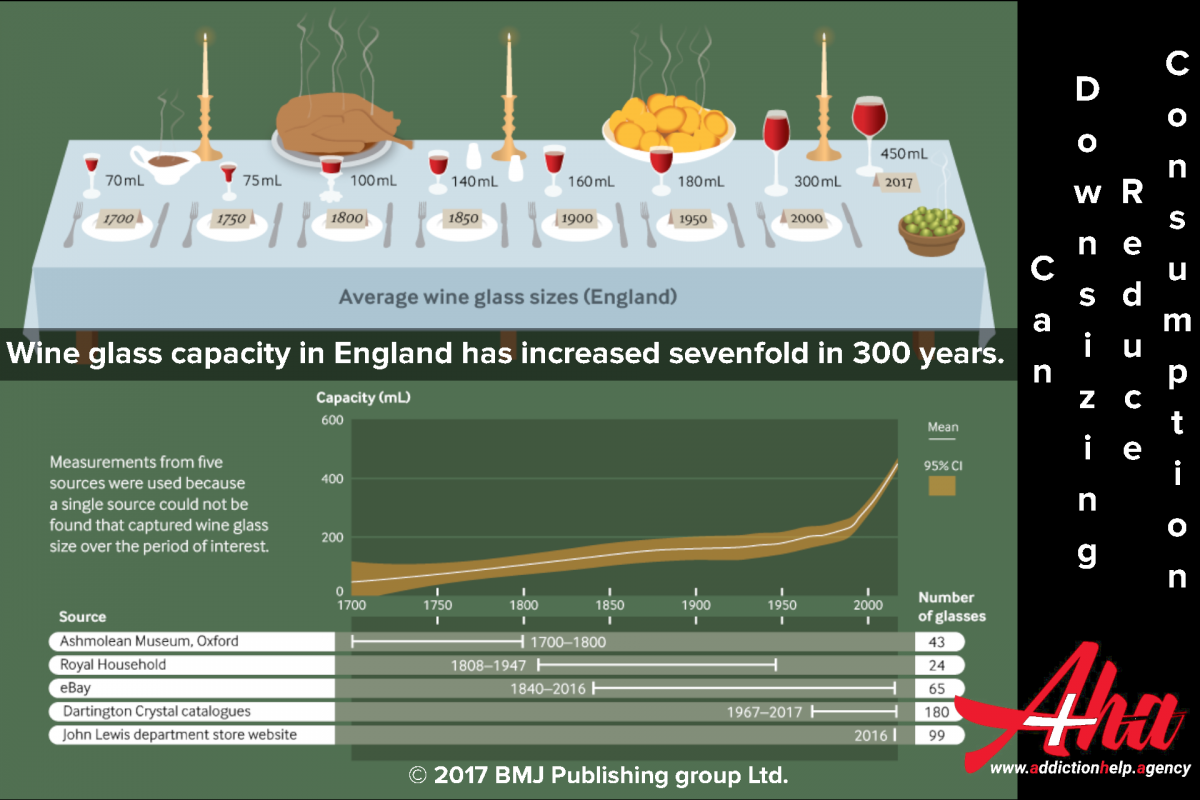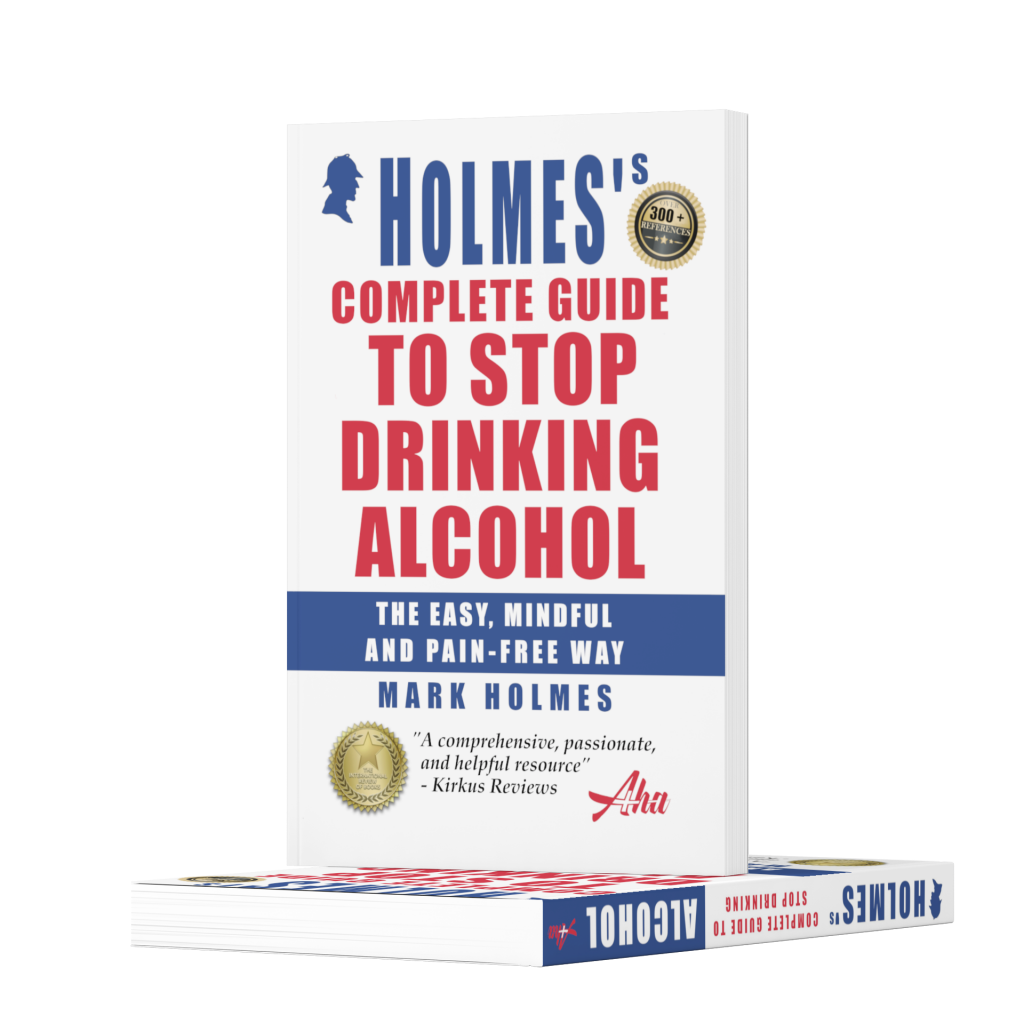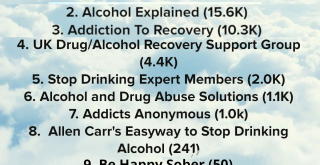Can downsizing reduce how much wine you drink?
Wine, mistletoe’s seasonal partner, may be a feature of some rather merry Christmas nights, particularly for women. As we approach the culturally legitimised deviancy of festive drinking, we suggest that size does matter: look at the wine glass in your hand.
A sharp rise in wine consumption
Alcohol’s adverse effects are well documented: it is the fifth largest risk factor for premature mortality and disability in high income countries and the seventh largest worldwide. The amount and form of alcohol consumption in England has fluctuated over the past 300 years, largely in response to economic, legislative, and social factors. Until the later 20th century the forms most commonly drunk were beer and spirits, as wine was for the richer Scrooges rather than the poorer Cratchits. Alcohol consumption in general then started to increase, and wine consumption rose almost fourfold during 1960-80, almost doubling again during 1980-2004.
Increased drinking since the mid-20th century reflects greater affordability, availability, and marketing of alcohol products, and more liberal licensing has led supermarkets to compete. Environmental cues such as the design of drinking glasses—particularly their size—may also have contributed to increased drinking, particularly of wine.
Larger tableware is known to increase food consumption: plate sizes have increased over the past 100 years, likely contributing to the prevalence of obesity and overweight. But less is known about glassware’s relation to how much we drink. Studying wine glasses’ capacity over time is an initial step in considering, firstly, whether any changes in their size may have contributed to the steep rise in wine drinking seen in the past few decades and, secondly, whether reducing wine glass size may help cut consumption.
We describe here the capacity of wine glasses in England since 1700, around which time glasses became the more common vessel for wine. This followed the development of lead crystal glassware by George Ravenscroft in the late 17th century, allowing for larger and less fragile glasses.
The wine glasses studied
We sought to measure the capacity of glasses used for unfortified wine (excluding sparkling wines) with a stem and foot that have been available or sold in England from 1700 to 2017. We searched online and contacted experts in antique glassware, including museum curators, although no single source captured wine glass size over the period of interest. We obtained measurements of 411 glasses from five sources:
-
The Department of Western Art at the Ashmolean Museum of Art and Archaeology, the University of Oxford (years 1700-1800; n=43)
-
The Royal Household, where a new set of glassware is commissioned for each monarch (years 1808-1947; n=24)
-
eBay, the auction and retail website (years 1840-2016; n=65)
-
Catalogues from Dartington Crystal, an English glassware manufacturer (years 1967-2017; n=180) and
-
John Lewis, the department store with the largest online selection of wine glasses (year 2016; n=99).
Two of these sources, eBay and John Lewis, were in the public domain. We had to seek access to the other sources to obtain capacity measurements.
We recorded the total capacity of the bowl of the glasses. Glasses from the Ashmolean Museum and Royal Household were measured by calculating the difference between the wine glass’s initial weight and its weight when filled to the brim with water (1 g water = 1 mL water). The capacity of glasses for sale on eBay was already provided for 12 glasses as part of their descriptions, and we requested this from the vendors for a further 82 glasses, obtaining information on 53. From Dartington Crystal we obtained capacity information from its current and archived catalogues, and John Lewis listed capacities on its online platform (www.johnlewis.com, accessed on 24 November 2016).
Wine glass capacity since 1700
Figure 1 shows the capacity of wine glasses from the five sources over time, along with the non-parametric regression fit for the mean (solid line) and the corresponding pointwise 95% confidence intervals (shaded area). Wine glass capacity increased from 66 mL (standard deviation 21.69) in the 1700s to 417 mL (SD 170) in the 2000s, and the mean wine glass size in 2016-17 was 449 mL (SD 161). This increase was gradual until the 1990s, when it became more marked.
 Figure 1. Wine glass capacity from 1700 to 2017: non-parametric regression curve fit for the mean (95% confidence interval shown in shaded area)
Figure 1. Wine glass capacity from 1700 to 2017: non-parametric regression curve fit for the mean (95% confidence interval shown in shaded area)
The range of wine glass capacities also increased over time, as would be expected given that the mean and variance typically increase together in such a context. Modelling the median shows the same pattern, suggesting that the steeper increase that started in the 1990s was not driven by outliers. Classical and robust regression estimates within each source suggested that wine glass capacity increased in all time periods from 1800 to 2017. Further details of the analysis are provided in supplemental materials.
Classical and robust regression estimates within each source suggested that wine glass capacity increased in all time periods from 1800 to 2017
Increasing glass sizes
To our knowledge, this is the first attempt to explore changes in wine glass size over time. Our findings suggest that their capacity in England has increased significantly in the past 300 years, including a marked increase since the 1990s. We consider the limitations of these observations, as well as their possible causes and implications.
We do not know how representative of their periods the glasses we observed are, in terms of the range of glasses or their popularity. We were unable to obtain sales data on the glasses in our sample. And we do not know whether the trends we observed in English wine glasses would be found in other countries.
Smaller wine glasses may have an endurance advantage over larger ones, which could help explain our findings. However, while endurance may have led to non-representative glass size samples in the museum’s 18th century collection and the glasses offered for sale on eBay, it would not explain the trend of increasing size observed in the wine glasses in the Royal Household or Dartington collections. In the Royal Household, all damaged glasses are repaired or remade. In the Dartington collection, sizes were taken from catalogues (current and archived). Further evidence that the observed increased capacity reflects a real change comes from our analyses that show an increase in capacity within the data from each source, starting from the 1800s. This is further supported by historical trends in wine glass production, which we outline below.
Possible causes
Increases in wine glass size over time may reflect changes in several factors including price, technology, societal wealth, and wine appreciation. The “glass excise” tax, levied in 1746, led to the manufacture of smaller glass products. This tax was abolished in 1845, and in the late 1800s glass production began to shift from more traditional mouth blowing techniques to more automated processes. These changes in production reflect our data, which show the smallest wine glasses during the 1700s and no increases in glass size during that period, as the observed increase occurred from the 19th century.
Larger wine glasses can also increase the pleasure from drinking wine, which may in turn increase the desire to drink more
Two changes in the 20th century probably helped to increase glass sizes further. Wine glasses started to be tailored in shape and size for different wine varieties, both reflecting and contributing to a burgeoning market for wine appreciation, where larger glasses were considered important. From 1990 onwards the US market’s demand for larger wine glasses was met by an increase in the size of glasses manufactured in England, where a ready market was also found (personal communication from Dartington Crystal’s head of design, 2017).
A further influence on wine glass size may have come from people running bars and restaurants, as well as their customers. If wine sales increased when it was sold in larger glasses this may have incentivised vendors to use them more. Larger wine glasses can also increase the pleasure from drinking wine, which may in turn increase the desire to drink more.
Glass size and consumption
We cannot infer that the increase in glass size and the rise in wine consumption in England are causally linked. Nor can we infer that reducing glass size would cut drinking. Our observation of increasing size does, however, draw attention to wine glass size as an area to investigate further in the context of population health. The amount of alcohol people drink, particularly wine, has increased sharply since the 1960s. Along with lower prices, increased availability, and marketing, larger wine glasses may have contributed to this rise through several potentially co-occurring mechanisms.
A larger cup or glass increases the amount of beverage poured and, in turn, the amount drunk. This may reflect “the unit bias heuristic,” in which people consume in units (for example: one cup of coffee, one slice of cake, or one glass of wine) provided the portion is above a certain minimum amount. Given that people may perceive the same portion as less than “one unit” when presented in a relatively empty large glass than when presented in a fuller but smaller glass, consumption may be further influenced by reducing glass size.
Wine sales
In the first study to examine the impact of larger wine glasses on sales we found that serving wine (usually a 175 mL measure) in larger wine glasses increased sales by almost 10% when compared with smaller glasses. This effect was replicated in one of two additional bars studied. Further similar studies are under way.
Alongside greater capacity, the strength of wine sold in the UK since the 1990s has increased
In England, unlike continental Europe, wine is increasingly served in 250 mL servings, and the “small” size of 125 mL is often absent from England’s wine lists or menus—despite a regulatory requirement introduced in 2010 that licensees must make customers aware of these smaller measures. A serving size of 250 mL—a third of a standard bottle of wine and a fifth of the weekly recommended intake for low risk drinking—is larger than the mean capacity of wine glasses available in the 1980s. Alongside greater capacity, the strength of wine sold in the United Kingdom since the 1990s has increased, so the amount of pure alcohol that wine drinkers consume has likely risen in line with larger glasses.
Policy options
If the effect of larger wine glasses on drinking proves reliable, regulating glass size as part of local licensing regulations would expand the policy options for reducing drinking outside the home. Reducing wine glass sizes in licensed premises may also shift the social norm of what a wine glass should look like, potentially influencing the size of glasses people use at home—where most alcohol, including wine, is drunk.
Another possible option for influencing the size of glasses we use at home is to encourage retailers to price them according to size, potentially increasing demand for smaller glasses. Encouraging wine producers and retailers to make non-premium bottles of wine available in 50 cL and 37.5 cL sizes, with proportionate pricing, may also encourage drinkers to downsize their wine glasses so that one bottle fills more glasses.
Raising public awareness of the increasing size of wine glasses and their potential to increase consumption will, of course, be important for the adoption of any of these measures. With moderate confidence we predict that, despite some resistance to these suggestions, their palatability will be greater in the month of January than in December.
Key messages
-
Wine glass capacity in England has increased from a mean of 66 mL in 1700 to 449 mL in 2017
-
Capacity has increased most steeply over the past two decades, along with wine consumption
-
While this association may not be causal, some evidence of a link between wine glass size and drinking suggests that reducing the size of wine glasses in licensed premises and in our homes could reduce consumption
References
-
-
-
-
-
-
-
-
-
-
-
-
-
-
- Vose RH
- The duty on glass. Lancet1845;45:214–6.
-
-
-
-
-
- Berry M. Minority of pubs failing “smaller measures test.” Morning Advertiser 2014. https://www.morningadvertiser.co.uk/Article/2014/10/24/Direct-Line-wine-glass-pub-measures-research.
-
- Department of Health. UK chief medical officers’ alcohol guidelines review: summary of the proposed new guidelines. 2016. https://www.gov.uk/government/consultations/health-risks-from-alcohol-new-guidelines.
- Stead M, Bauld L, Angus K, et al. Scoping and feasibility study to develop and apply a methodology for retrospective adjustment of alcohol consumption data. Public Health Research Consortium, 2013. http://phrc.lshtm.ac.uk/papers/PHRC_008_Final_Report.pdf.
This article originally appeared in the British Medical Journal, BMJ 2017;359:j5623











0 Comments